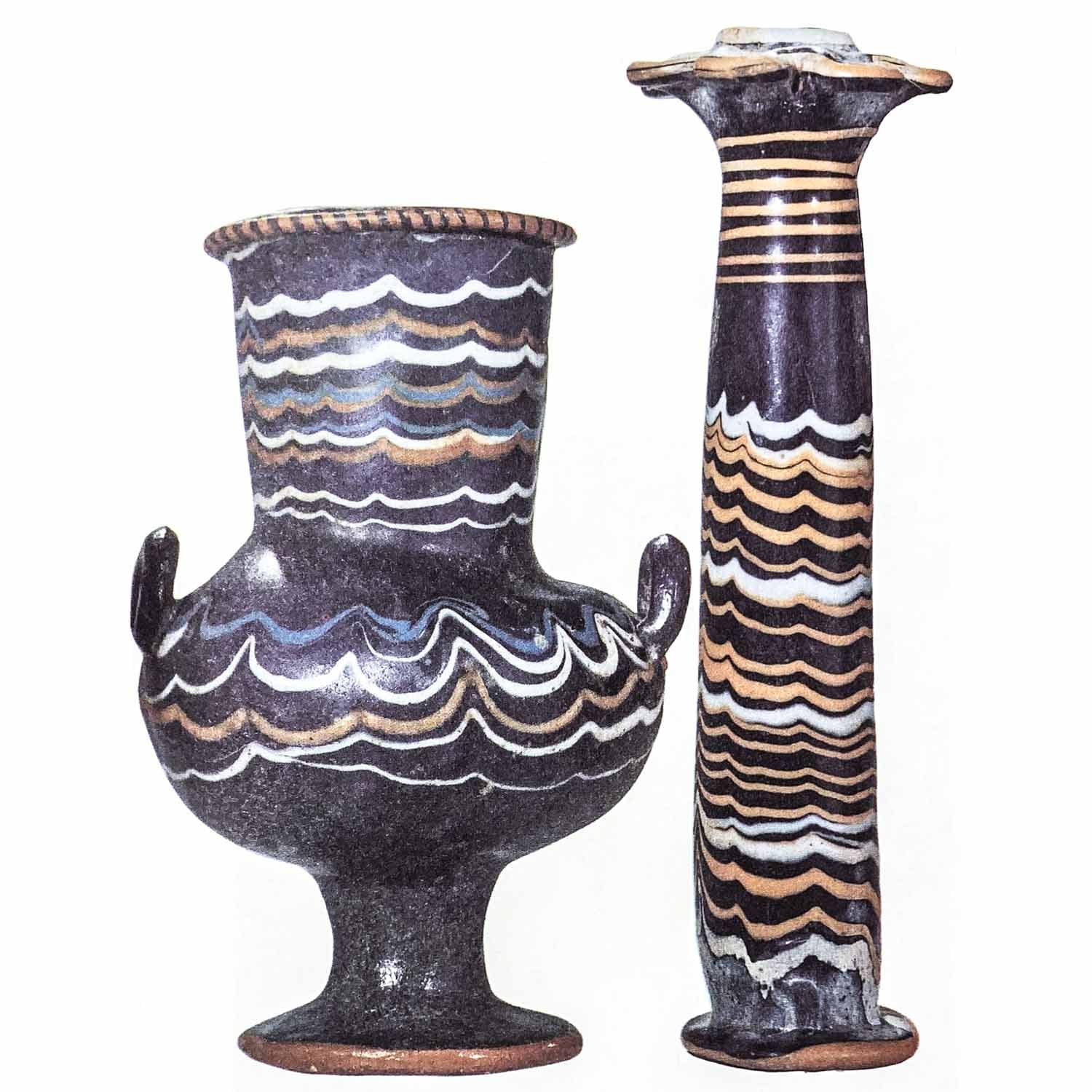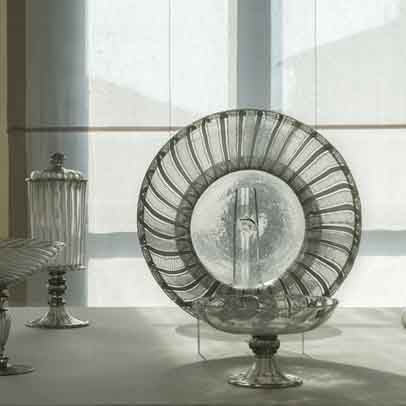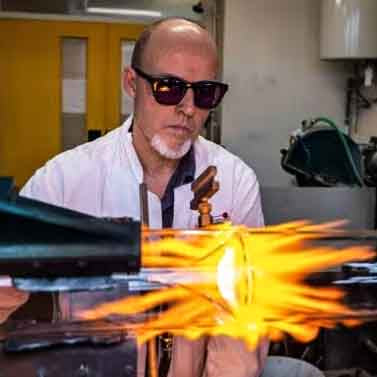Glassmaking is an art that has been mastered by many cultures throughout history. The Middle East has a particularly rich tradition that go back thousands of years ago. The Mesopotamians was one of the earliest known civilizations to produce glass objects like small glass beads around 2500 BC, which is one of the earliest known glass objects. They also produced glass vessels such as bottles and bowls using core-formed and mold-blown techniques. Their glass vessels were primarily used for storage often decorated with patterns and designs.The Egyptians were also skilled in the art of glassmaking, they used similar techniques as the Mesopotamians to create glass vessels but their glasswork was often more elaborated and colorful very highly prized and traded throughout the ancient world. They used a wide range of colors and designs to create unique and beautiful glass vessels.While knowledge of glass making spread widely, glass was still a rare and costly material used often with precious metal, ivory and other luxury goods and sharing with them a comparable value.
The Phoenicians excelled in the art of glassmaking, they developed a unique style known as "Phoenician glass." This style was characterized by multicolored designs created by layering and twisting different colored glass rods. Their glass was highly valued and was used for both practical and decorative purposes developing a technique called "millefiori," which involves creating intricate patterns by slicing glass canes into thin cross-sections and then fusing them together.

Small, rod-formed Phoenician head pendants and beads dating from the late sisth to late thisrd century BC
During the Islamic Golden Age, which lasted from the 8th to the 14th centuries, the Middle East became the center of glassmaking. The artisans of the region developed new techniques and styles that helped to shape the art of glassmaking for centuries to come. The Islamic glassmakers introduced the use of enamel decoration, which allowed for intricate designs to be created on glass vessels, multi-part glass lamps were highly prized. They developed a technique called "lustreware" which involves applying a metallic glaze to the surface of glass vessels to create a shiny reflective finish.
Actually the region was one of the first to develop glass mirrors, which were used in the 3rd century BC. At the same period the ancient Greeks and Romans also used glass mirrors but they were often made from polished metal instead of glass.
The Middle East was instrumental in the development of stained glass, which became popular during the Gothic period in Europe.
Egyptians, Phoenicians and the Mesopotamians were all precursors in the art of glass, their incredible techniques and styles who have influenced later many civilizations
Related Posts:
Art glass in the world
History of Glass




Leave a comment
All comments are moderated before being published.
This site is protected by hCaptcha and the hCaptcha Privacy Policy and Terms of Service apply.